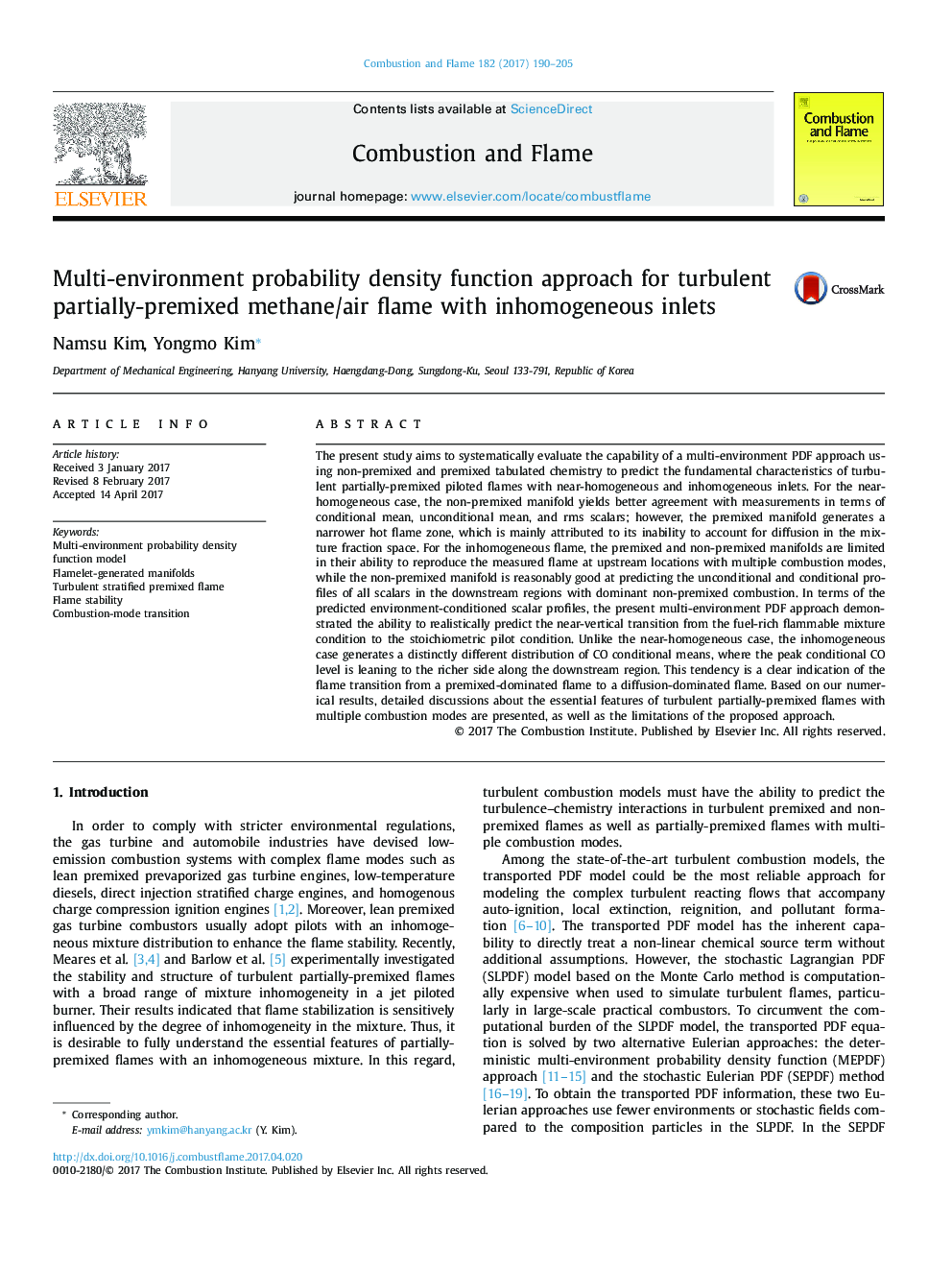| Article ID | Journal | Published Year | Pages | File Type |
|---|---|---|---|---|
| 4764423 | Combustion and Flame | 2017 | 16 Pages |
Abstract
The present study aims to systematically evaluate the capability of a multi-environment PDF approach using non-premixed and premixed tabulated chemistry to predict the fundamental characteristics of turbulent partially-premixed piloted flames with near-homogeneous and inhomogeneous inlets. For the near-homogeneous case, the non-premixed manifold yields better agreement with measurements in terms of conditional mean, unconditional mean, and rms scalars; however, the premixed manifold generates a narrower hot flame zone, which is mainly attributed to its inability to account for diffusion in the mixture fraction space. For the inhomogeneous flame, the premixed and non-premixed manifolds are limited in their ability to reproduce the measured flame at upstream locations with multiple combustion modes, while the non-premixed manifold is reasonably good at predicting the unconditional and conditional profiles of all scalars in the downstream regions with dominant non-premixed combustion. In terms of the predicted environment-conditioned scalar profiles, the present multi-environment PDF approach demonstrated the ability to realistically predict the near-vertical transition from the fuel-rich flammable mixture condition to the stoichiometric pilot condition. Unlike the near-homogeneous case, the inhomogeneous case generates a distinctly different distribution of CO conditional means, where the peak conditional CO level is leaning to the richer side along the downstream region. This tendency is a clear indication of the flame transition from a premixed-dominated flame to a diffusion-dominated flame. Based on our numerical results, detailed discussions about the essential features of turbulent partially-premixed flames with multiple combustion modes are presented, as well as the limitations of the proposed approach.
Keywords
Related Topics
Physical Sciences and Engineering
Chemical Engineering
Chemical Engineering (General)
Authors
Namsu Kim, Yongmo Kim,
